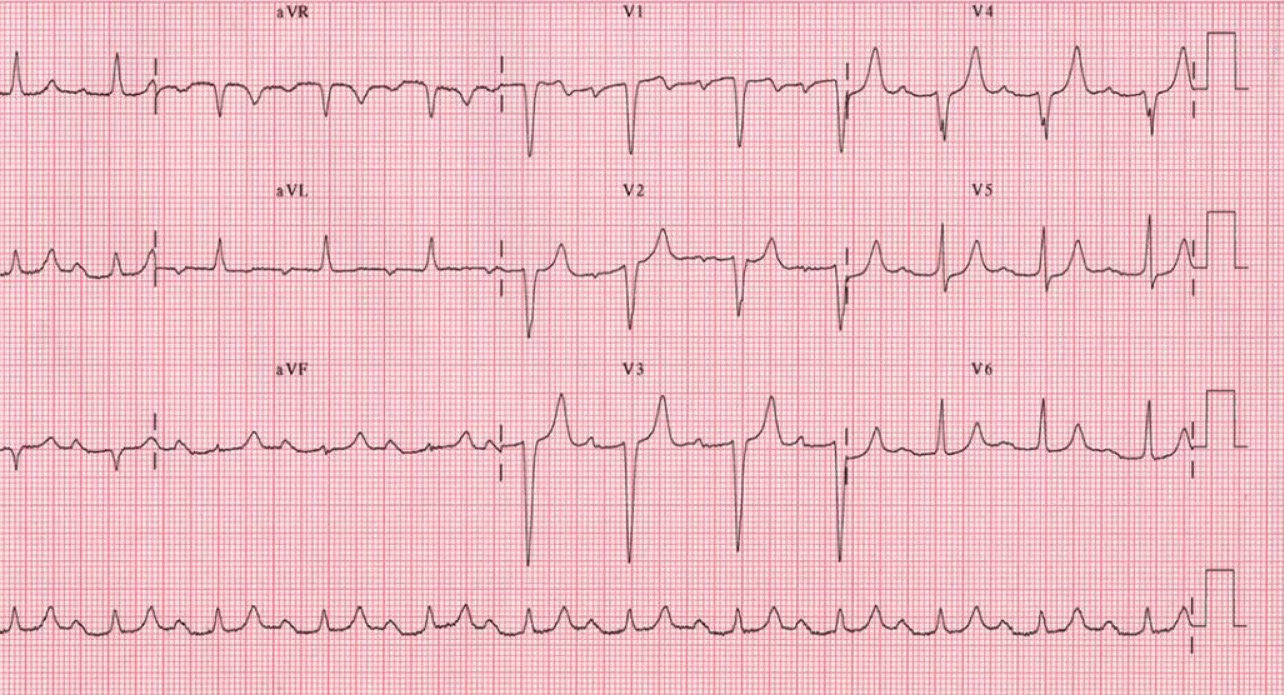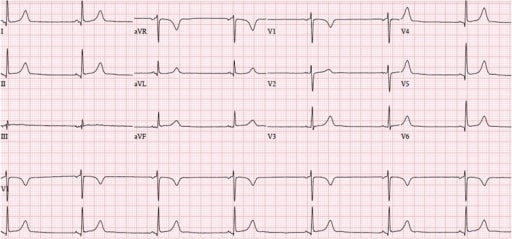Playlist
Show Playlist
Hide Playlist
Bradyarrhythmias: Definition & Types
-
Emergency Medicine Bradycardia.pdf
-
Download Lecture Overview
00:01 Hello. 00:01 Now we’re gonna talk about common bradyarrhythmias. 00:05 How is bradycardia defined? Well, very simply, bradycardia is any heart rate under 60 beats per minute for an adult. 00:13 This can be a normal variant particularly in young healthy people and trained athletes. 00:18 It’s not uncommon for endurance athletes to have rusting heart rates in the 40s. 00:23 It can also be abnormal but chronic, so in the case of things like of sick sinus syndrome or untreated hypothyroidism, patients might be chronically bradycardic. 00:33 However, there are also acute causes of bradycardia in particular different forms of heart block, which we’re gonna talk about in this lecture. 00:42 So when do we need to treat bradycardia? In the emergency setting, very simply, we don’t need to do anything about bradycardia unless the patient is either unstable or symptomatic. 00:55 So if the patient is asymptomatic, their blood pressure is normal, their mentating normal, they´re stable, you don’t need to emergently treat them in the ED setting. 01:05 Now, they might require a long term treatment in the outpatient setting. 01:09 But it’s not something that you’re gonna aggressively manage in the emergency department. 01:14 So there are different types of bradycardia. 01:17 And in general, you don’t have to worry much about sinus bradycardia, it’s typically caused by either autonomic factors, so the patient has really vigorous parasympathetic tone, or systemic things like hypothyroidism or use of medications, like beta-blockers that decrease the heart rate. 01:37 First degree AV nodal blocks are blocks that exist within the atrioventricular node, and again these are pretty benign. 01:47 Second degree AV-block, comes in two different varieties. 01:51 So your Mobitz I or Wenckebach Type AV-block is again an intranodal process, and we’ll talk a little bit about why that is. 02:00 And in general this is also a benign finding. 02:04 However, Mobitz II blocks, which we’re gonna describe in more detail, are located below the level of the AV-node, and these are actually a little bit more sinister, because these are often associated with underlying heart disease, and can deteriorate into third degree or complete heart block, which is almost always infranodal, and carries with it a poor prognosis without treatment. 02:29 So in general, as you move down this list from sinus bradycardia, all the way to complete heart block, you should begin to worry more and more and more about your patient, with each subsequent step down the list. 02:41 And for Mobitz Type II and third degree heart blocks, these patients actually can be unstable and require emergent treatment in the ED setting. 02:49 So let’s start off with sinus bradycardia. 02:52 So like we said, bradycardia is just a rate of less than 60. 02:55 So to be bradycardic, your heart rate has to be less than 60. 02:58 In sinus bradycardia you’re gonna have normal P waves which are marked here. 03:02 You’re also gonna have normal QRS complexes which again are marked. 03:06 The ratio between your P's and your QRS's is gonna be one to one. 03:11 So every P wave is gonna have a QRS following it. 03:14 And your PR interval is gonna be normal. 03:17 So it’s gonna be less than 200 milliseconds in every case. 03:21 A normal PR interval that’s constant, and a one to one P to QRS ratio is what’s gonna enable you to diagnose sinus bradycardia. 03:30 Now sinus bradycardia can be either systemic related to the autonomic nervous system, so high parasympathetic tone, or it can be related to disease within the sinus node causing the sinus node to conduct slowly or inefficiently. 03:45 There are a lot of causes of sinus bradycardia, and like I mentioned before, it’s nonpathologic, it can be normal in young healthy people, it can be caused by medications like AV nodal blockers, It can be cause by hypothermia, hypothyroidism. 04:00 Children in particular, when they’re hypoxic will tend to become bradycardic and it can be cause by sinus node disease, like sick sinus syndrome. 04:09 In general, no emergency treatment is needed for sinus bradycardia, although you do wanna avoid doing things that are gonna exacerbate the bradycardia. 04:18 So you wouldn’t wanna give these patients AV nodal blocking agents.
About the Lecture
The lecture Bradyarrhythmias: Definition & Types by Julianna Jung, MD, FACEP is from the course Cardiovascular Emergencies and Shock.
Included Quiz Questions
Which of the following statements regarding bradycardia is INCORRECT?
- It is always abnormal.
- It is defined as a heart rate of less than 60 per minute.
- It is chronic and abnormal in patients with sick sinus syndrome.
- Untreated hypothyroidism may present as chronic bradycardia.
- Acute and abnormal bradycardia occur in heart block.
Which of the following will NOT cause sinus bradycardia?
- Hyperthermia
- AV-nodal blockers
- Hypothyroidism
- Hypoxia in children
- Sinus node disease
Customer reviews
5,0 of 5 stars
| 5 Stars |
|
5 |
| 4 Stars |
|
0 |
| 3 Stars |
|
0 |
| 2 Stars |
|
0 |
| 1 Star |
|
0 |





